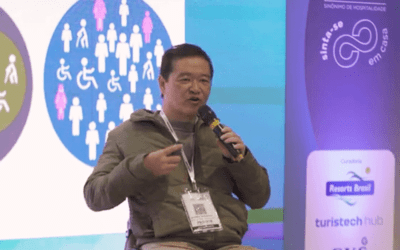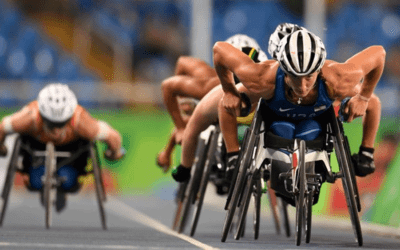Disabled Americans Battle for Access to Hotel Pools
For many disabled American travelers, a key form of summer relief – the hotel pool – remains out of their reach.
People with mobility challenges or paralysis often need a mechanized pool lift or a gently sloping ramp to get into the water. Without those accommodations, they’re sidelined.
That’s why a government mandate to make such pools accessible to people with disabilities by early next year has become an unlikely battlefield: pitting disability-rights groups against the hotel industry.
Both sides agree on one point: Everyone should be able to get into a public pool. What they don’t agree on is what is doable.
Meanwhile, Ann Cody, a former track and field athlete, said she doesn’t even pack her swimsuit any more when she goes on trips. Paralyzed at age 16 by transverse myelitis, a rare disease of the spinal cord, Cody is a paraplegic. As director of policy and global outreach for BlazeSports America, in Washington D.C., she travels a lot and finds even business-oriented hotels often don’t have lift-access to their pools, she said.
“Swimming in the summer was always such a big part of my life, culturally and recreationally. People with disabilities want to enjoy the pool not just for health and fitness, but socially as well,” Cody said.
That’s why the American Association of People with Disabilities (AAPD) is urging hotels to speed up their implementation of Americans with Disabilities Act (ADA) rules stipulating that all public swimming pools, wading pools and spas be accessible to people with disabilities by Jan. 31, 2013.
The rules about accessible pools, published by the U.S. Department of Justice’s Civil Rights Division in 2010, were updated in May 2012 in response to feedback from the hotel industry about implementation challenges they face. The requirements mandate that public swimming areas — including hotels, motels, recreation centers, public golf clubs, water parks and fitness clubs — be retrofitted to make them accessible to people with disabilities, and that newly constructed pools be designed to provide the disabled the same independence, ease and convenience enjoyed by fully-abled people.
Smaller pools are only required to have one means of entry, either a lift or a sloped alternative to pool steps. Large pools — longer than 300 feet — must have two accessible entries, with at least one being a sloped entry or pool lift.
There are exceptions for areas where there are multiple spas or places with river-like water zones and sand bottom pools.
The two sides disagree about whether some of the regulations are feasible and how quickly the changes can be implemented. One of the biggest issues under debate is the question of fixed lifts versus portable lifts.
Helena Berger, executive vice president and chief operating officer of AAPD, said her organization is arguing for permanent lifts rather than portable models because they tend to be easier to use and more readily accessible. But the fixed lifts, with a cost estimated at about $8,000 each, can require additional space by the pool and sometimes require digging up concrete and placing electrical conduits.
Berger sees this as a manageable cost. “Think of all the money being spent for flat-screen TVs in hotels,” she said. “From a monetary point of view, for many of these hotels, it would not be a hardship to purchase fixed lifts and make the other accommodations.”
But Marlene Colucci, executive vice president for policy for the American Hotel and Lodging Association (AHLA), in Washington, D.C., said that while the hotel industry is committed to implementing the recommendations, many hotels, small and large, are facing problems: “Our industry really wants to accommodate guests and it’s in our best interest to do that, but we want to provide access safely for everyone.”
There is so much variability in the size of pool areas, especially in smaller and older hotels, she said, that the hotel industry needs some flexibility within the federal rules.
“We’re asking the federal government to take a balanced approach,” she said. “You should be able to share a lift between two bodies of water in the same area, for example.”
And with 320,000 pools affected by the new rules, Colucci said the AHLA is concerned that the demand for lifts is exceeding current supply.
The industry is also worried about increased liability associated with making pool lifts permanently available when lifeguards aren’t present. Hydraulic lifts can move quickly, potentially causing injury, Colucci said.
More information
The U.S. Justice Department has more on ADA requirements for accessible pools.
Source: HealthDay News
Compartilhe
Use os ícones flutuantes na borda lateral esquerda desta página
Siga-nos!
Envolva-se em nosso conteúdo, seus comentários são bem-vindos!
Artigos relacionados
Acessibilidade no ESG. Equipotel aborda o tema para o turismo.
Acessibilidade no ESG, para o mercado do turismo. Equipotel aborda a importância da inclusão da pessoa com deficiência.
Morte Sobre Rodas. Filme inclusivo foi candidato ao Oscar.
Morte Sobre Rodas. Dois protagonistas do filme, são pessoas com deficiência, um usuário de cadeira de rodas e outro com paralisia cerebral.
Paralimpíada de Paris 2024. A deficiência não é um limite.
Paralimpíada de Paris 2024. A cidade luz sedia o maior evento esportivo do mundo para as pessoas com deficiência.






0 comentários